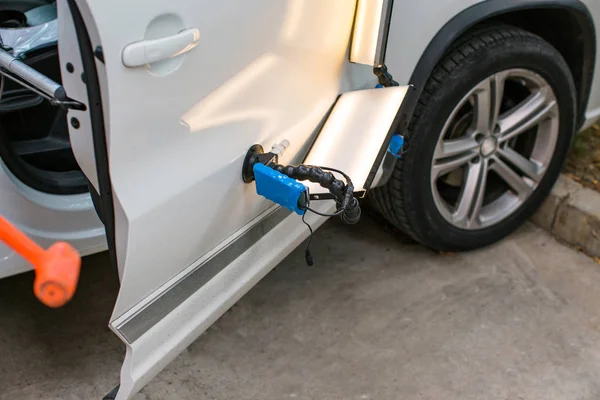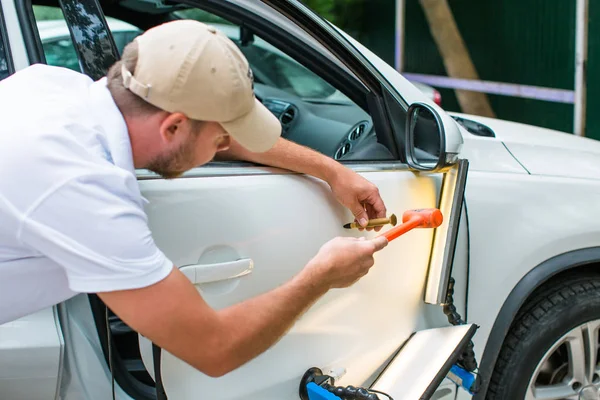Expert Techniques For Classic Car Dent Repair: Restoring Value With Original Charm
Classic cars hold a special place in the hearts of enthusiasts and collectors alike. Their unique charm and historical significance make them valuable assets, often increasing in worth over time. However, even the most cherished vehicles can suffer from dents and dings, whether from minor accidents, environmental factors, or the wear and tear of time. Restoring these cars to their original glory requires expert techniques tailored to the delicate nature of classic automobiles. This article delves into various methods of classic car dent repair, ensuring that the vehicle’s value and charm are preserved.
Understanding the Importance of Dent Repair
The Impact of Dents on Classic Cars
Dents can significantly detract from the aesthetic appeal of classic cars, impacting their value and marketability. Collectors and enthusiasts appreciate the authenticity and condition of classic vehicles. A car with visible damage is often viewed as less desirable, which can lead to decreased value. Restoring a classic car not only enhances its appearance but also maintains its historical integrity. It is essential for owners to address dents promptly to prevent further damage and maintain the car's resale value.
Original Charm vs. Modern Techniques
When repairing dents in classic cars, it is crucial to use methods that align with the vehicle’s original construction and materials. While modern techniques like paintless dent repair (PDR) are effective, they may not always be suitable for older cars that require more traditional methods. Ensuring that repairs are completed with care and precision helps maintain the classic vehicle's authenticity and original charm.
Expert Dent Repair Techniques
Paintless Dent Repair (PDR)
PDR is a highly effective technique for repairing dents without affecting the car's original paint. This method involves manipulating the metal from behind the dent using specialized tools. Technicians apply pressure to gradually return the metal to its original shape, minimizing the risk of paint damage. PDR is particularly suitable for shallow dents and dings, making it an excellent option for classic cars that have not undergone extensive bodywork.

Traditional Bodywork Techniques
For deeper dents or those requiring more extensive repairs, traditional bodywork techniques may be necessary. This process involves several steps, beginning with assessing the damage to determine the best course of action. Technicians may use methods such as filling, sanding, and repainting to restore the car's surface. While traditional bodywork can be effective, it requires skill and precision to ensure that the repair blends seamlessly with the original paint and body contours.
Metal Shrinking and Stretching
Metal shrinking and stretching are essential techniques for classic car dent repair. Shrinking is used to address areas where the metal has been stretched and distorted, typically seen in larger dents. This technique involves heating the metal to create a controlled contraction, allowing the technician to reshape the area. Conversely, stretching may be employed to expand areas of metal that have been compressed. Both techniques require an experienced hand, as improper execution can lead to further damage or irregularities in the vehicle’s surface.
Choosing the Right Repair Professional
- Evaluate Experience and Specialization: Look for technicians with specific experience in classic car restorations, as they will understand the unique materials and construction techniques used in vintage vehicles.
- Check Credentials and Reviews: Research the professional’s credentials, including certifications and customer reviews, to assess their reputation and reliability in the classic car restoration community.
- Examine Previous Work: Request to see a portfolio of completed projects to gauge the quality and attention to detail in their repairs, ensuring their work meets your expectations.
- Discuss Repair Techniques: Inquire about the specific techniques they plan to use, such as paintless dent repair or traditional bodywork, to ensure they align with your car’s needs and preservation of its original charm.
- Assess Communication and Customer Service: Choose a professional who communicates clearly and is responsive to your questions, as good customer service is essential for a successful repair experience.

Maintaining Your Classic Car Post-Repair
Regular Inspections
Once the dent repair is complete, regular inspections of the vehicle are essential to maintain its condition. Checking for new dents, scratches, or signs of wear can help catch potential issues early. Regular maintenance not only keeps the car looking great but also preserves its value over time.
Proper Storage Conditions
Proper storage conditions play a significant role in the longevity of classic cars. Storing the vehicle in a climate-controlled environment protects it from temperature fluctuations, humidity, and environmental factors that can cause damage. Additionally, using protective covers can shield the car from dust and debris, minimizing the risk of scratches and dents.
Routine Maintenance
Routine maintenance is vital for classic cars, encompassing regular washing, waxing, and mechanical servicing. Keeping the exterior clean and well-maintained can help prevent the accumulation of dirt and grime, which may contribute to rust or other issues. Engaging in regular mechanical checks ensures the vehicle remains in optimal running condition, preserving its charm and enhancing its overall value.
Dent Werx Paintless Dent Repair
Houston, Texas - United States
Phone: +1-832-275-4374

